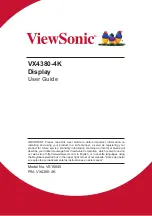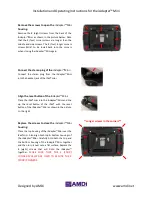
GTN 625/635/650 TSO Installation Manual
Page 3-7
190-01004-02
Rev. C
3.4.2
COM Antenna Location
The GTN COM antenna should be well removed from all projections, engines and propellers. The ground
plane surface directly below the antenna should be a flat plane over as large an area as possible
(18‖ square, minimum). The antenna should be mounted a minimum of six feet from any DME or other
COM antennas, four feet from any ADF sense antennas, and two feet from the GTN and its GPS antenna.
The COM antenna should also be mounted as far apart as practical from the ELT antenna. Some ELTs
have exhibited re-radiation problems generating harmonics that may interfere with GPS signals. This can
happen when the COM (GTN or any other COM) is transmitting on certain frequencies such as 121.15 or
121.175 MHz, which may cause the ELT output circuit to oscillate from the signal coming in on the ELT
antenna coax.
If simultaneous use of two COM transceivers is desired (split-COM or simul-comm), use of the TX
interlock function is mandatory. In addition, the COM antennas should be spaced for maximum isolation.
A configuration of one topside antenna and one bottom side antenna is recommended.
NOTE
Canadian installations are required to meet Industry Canada specifications for maximum
radiation as documented in Radio Specifications Standard 102 (RSS-102). For more
information about RF exposure and related Canadian regulatory compliance, contact:
Manager, Radio Equipment Standards
Industry Canada
365 Laurier Avenue
Ottawa, Ontario
K1A 0C8
In accordance with Canadian Radio Specifications Standard 102 (RSS 102), RF field
strength exposure to persons from an antenna connected to this device should be limited
to 60V/m for controlled environment and 28 V/m for uncontrolled environment.



































